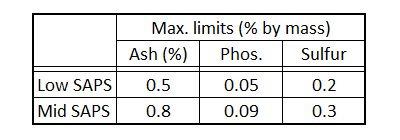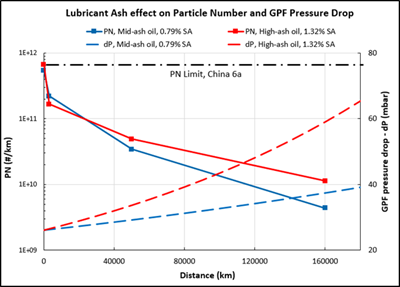Jun 26, 2020
Posted by Keith Howard, Strategic Technology Manager
The right choice of engine oil has always been important to ensure the engine is protected and continues to operate efficiently over its lifetime. For vehicles equipped with advanced exhaust aftertreatment such as gasoline particulate filters (GPFs) a further dimension of engine oil performance is added.
GPFs will block as they collect the particulates from combustion. These soot particles can be oxidized, reducing the blockage and preventing excess back pressure on the engine. The blockage from ash, however, is irreversible and can impact long-term engine performance and durability.
The primary source of this ash is the engine lubricant additive package, and within it the main impact comes from metallic soaps used in the detergent. Most types of anti-wear chemistry also contribute some ash. In small amounts ash provides and additional filtration layer and improves the removal of particulates. In larger amounts the ash builds up to the point where back pressure can affect the efficiency and power output of the engine. Figure 1 shows this. A mid-ash oil produced the same reduction in particulate number but had a much smaller effect on back pressure. Power and efficiency benefits of around 5% at full load operation were recorded.

The catalytic coatings of the GPF and the three-way catalyst can be affected by additive chemistries. Phosphorous and sulphur are known to impact catalysts by directly reacting with the precious metals used in the coating, or by forming a passivating layer acting as a barrier to the exhaust gases. This can reduce the effectiveness of the gaseous pollutant conversion, and for the GPF can impede the oxidation of trapped soot. Other chemistries affect aftertreatment to a lesser effect, but the main effect is from the sulfated ash (sulfated refers to the measurement method), phosphorous and sulfur which are known collectively by the acronym SAPS and are specifically limited in aftertreatment compatible lubricant specifications.
Aftertreatment compatible engine lubricants for passenger cars were introduced into the specifications produced by ACEA (the European automobile manufacturers association) in 2004. These were identified as the C categories, having low SAPS or mid SAPS levels as shown in Figure 2. European OEM specifications normally use ACEA requirements as a baseline, adding their own specific requirements. Both ACEA and OEM specifications have evolved significantly since then in line with developing engine and aftertreatment technology.

Our View
Modern aftertreatment compatible engine lubricants provide the optimum combination of protection for complex hardware, high fuel efficiency and aftertreatment compatibility. OEMs across the world recognize their importance to the long-term performance of their vehicles. As emissions legislation tightens and technology becomes more complex their use will become even more important.









